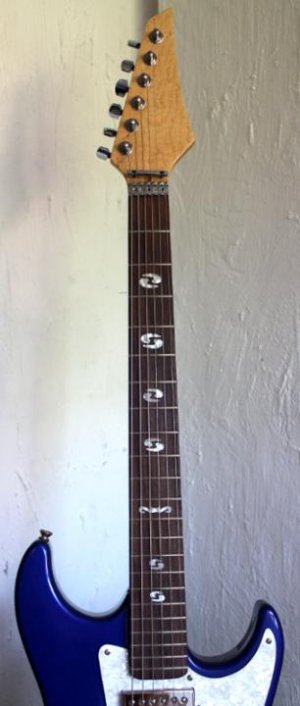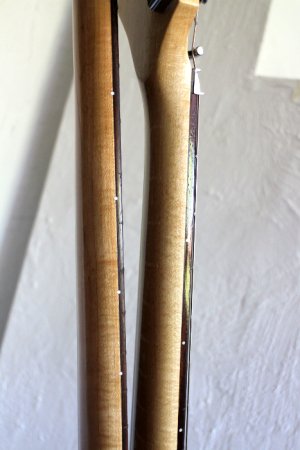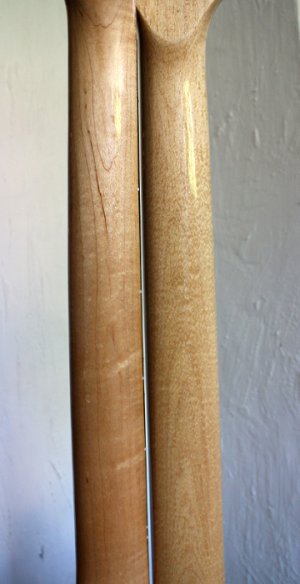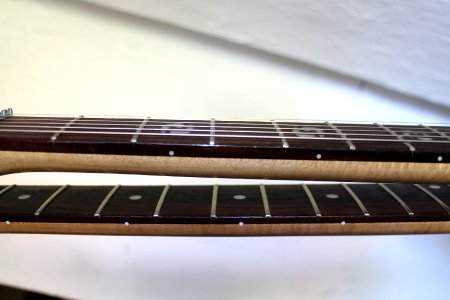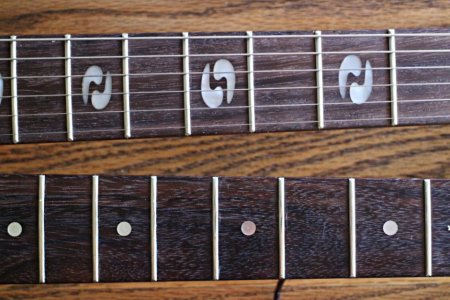I replaced the old neck I had on a Squire strat. The change in tone was so obvious I had to alter the volume pot from a little over 500K to 300K to get about the same tone, and it's still a little brighter. Both necks are maple with rosewood fingerboard. Both fingerboards are unfinished except for lemon oil. Both necks have about the same gloss finish. Both have nickel frets. Here's the obvious differences:
1. The new neck has more total mass. It's thicker (distance from back of neck to top of fretboard).
2. Frets are new and unused on the new neck, so the frets are higher. The crown shape is also more round compared to original neck. The original neck had frets worn down low to the point only a wide crown was possible.
Should I have expected the instrument to have a brighter tone with the new neck?
(Scroll down for pics.)
1. The new neck has more total mass. It's thicker (distance from back of neck to top of fretboard).
2. Frets are new and unused on the new neck, so the frets are higher. The crown shape is also more round compared to original neck. The original neck had frets worn down low to the point only a wide crown was possible.
Should I have expected the instrument to have a brighter tone with the new neck?
(Scroll down for pics.)
Last edited:


